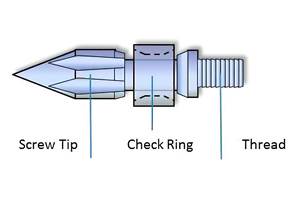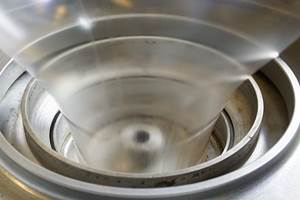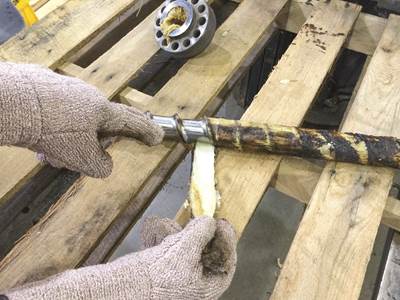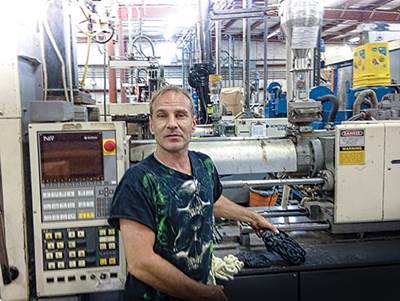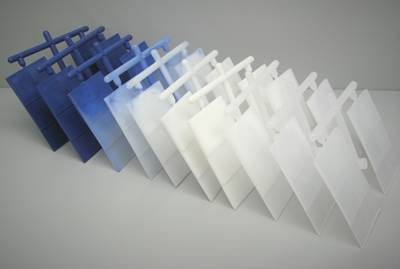Twin-screw extruders (TSEs) have long been the machine of choice for compounders due to their superior performance and customizability. They process almost all resins and allow for different additives and fillers to be combined to achieve different pellet sizes and shapes with an impressive array of possible properties.
While the possible end product has endless combinations, some of the ways to achieve those products also lead to contamination issues and many areas of low flow or low pressure throughout the barrel. In a continuous process like extrusion, contamination has a detrimental effect on the bottom line. Purging in extrusion tends to be more challenging than in other processes, and TSEs face these challenges on a much larger scale because the systems are much more complex than their single-screw brethren.
This article will examine some of the specific challenges to purging in twin-screw extrusion. Changeovers, contamination, screw pushes, and extended downtime are the four greatest processing issues that engineers at compounding plants face. Here, Asaclean purging experts will share best practices from their more than 40 years of combined experience. Additionally, we will hear first-hand experience from machinery maker Leistritz Extrusion and Asaclean sister company Asahi Kasei Plastics of North America—one of the largest compounders in North America. They will identify common processing issues they experience most commonly.

Proper purging procedures can help keep compounding twin screws up and running.
Tip 1: Don’t use production resin, regrind, or additives to purge your extruder: Production resins are not designed to clean machines and are not a substitute for commercial purging compounds. Purging your extruder with the next resin or regrind is time consuming, wasteful and ineffective at removing color and carbon contamination. David Krueger, a process engineer at Asahi Kasei Plastics North America (APNA) has spent his career in compounding and knows how this seemingly cost-saving decision can backfire. “In past jobs, I’ve seen many processors try to use low-melt PE to displace engineering resins, including nylons, styrenics and ABS. These resins inevitably break down and form a lot of carbon deposits. You may try to use fillers to help clean the barrel, but if the base resin tends to form carbon, it will happen regardless of what you fill it with. Save yourself the headache and embrace using a purging compound.”
“Purging compounds allow you to have consistent changeover times, regardless of what you’re compounding.”
Adds Lenny Gutierrez, a purging expert and sales representative for Asaclean, who has worked to solve compounders’ contamination issues for years: “Twin-screw end users are laser-focused on the product specs of their customers. Any possible variant to the process, especially contamination from a previously run or unexpectedly degraded material, can throw off the process and create delays in production due to off-spec product.” Krueger notes an additional headache of trying to purge with production resin—unpredictable downtime. “Even if you take the contamination issues out of the conversation, the changeover time will vary wildly if you are using resins or regrind. If an olefin is being compounded, cleaning the barrel may take 20 min. With other resins such as styrenics and nylon, increased carbon deposits may lead to prolonged cleaning time. It may take 3-4 hr just to clean the barrel. Purging compounds allow you to have consistent changeover times, regardless of what you’re compounding.”
When you use regrind or virgin resins to purge, the material creates another layer over any existing resins, color deposits or carbonized material within the barrel and on the screw. In time, these layers become additional sources of contamination, making purging even more difficult. Once your machine returns to production, carbonized materials eventually break free and contaminate your product. Twin-screw extruders cannot afford material or carbon contamination. Fortunately, these issues are easily avoided by selecting the appropriate purging compounds for your specific needs.

Tip 2: Ask yourself these questions to select the best purging compound for your needs: Introducing a purge program can easily help compounders cut downtime by 50-75%. But when it comes to cleaning twin-screw extrusion equipment, there isn’t a one-size-fits-all process or purging-compound solution. Carbon builds up in your machine’s dead spots: mixing sections, dies, downstream equipment, etc. These are low-flow areas that would benefit from a chemical purging compound. But if you are dealing with frequent teardowns, a strong cleaner might be needed as well.
Without the right purging compound and procedures, you run the risk of increased reject rates. However, determining the proper purging compound grade is not simply about eliminating color and carbon contamination—it’s also about the impact on your bottom line. Taking a holistic approach will help you improve efficiency and profitability. When you reach out to a purging expert for a free consultation, they will look at several key things to consider in order to select the right grade and quantities necessary to choose the best purging compound for your system. Some of these questions include:
• What is the size of your extruder?
• What resins are you running?
• What are your processing temperatures?
• What is/are the intended application(s) of the purging compound?
• What issues are your currently experiencing?
The answers to these questions are crucial in order to make an informed decision about the best course of action. Using the right purging compound helps you maximize your operational efficiency by effectively eliminating all contamination and increasing uptime and productivity. If you understand the impact of each of these questions, you are equipped to choose the right solution to effectively clean your extruder.
Both mechanical and chemical purge types can help twin-screw processors maintain their machines contaminant-free. Mechanical purge compounds do an excellent job of safely scrubbing screw and barrel surfaces. However, the cleaning performance is restricted predominantly to the surfaces where material actually flows through with a decent amount of pressure. For twin-screw machines that use simpler screw types and mixing elements, a mechanical purge can work perfectly.
“Changeover time will vary wildly if you are using resins or regrind for purging.”
However, to administer proper cleaning in low-pressure areas (like near vents) or in hard-to-reach areas (found on more complex screw mixing elements), a chemical purge gives the better result. Chemical purge compounds achieve cleaning by measure of a chemical reaction that is contained in the machine during a soak period. The chemical reaction creates gases that quickly get into hard-to-reach areas that can be considered low-pressure or low-flow (commonly known as dead zones or dead spots) that otherwise may not be directly and physically scrubbed by a mechanical grade. Gutierrez explains, “a general understanding of how material travels through specific screw types, while also identifying high- and low-pressure flow paths, can help a processor decide which type of purge would be best for their specific twin-screw setup.”
Leistritz Extrusion has performed extensive testing to determine the best purging options for their customers, notes Charlie Martin, president and general manager. Studies have been performed on various TSEs to identify the most optimum purging technique, with objectives of determining the minimum quantity of purge material required and least time spent purging. The methods analyzed were: flood feeding (fill the hopper, and the TSE screws determine the rate); metered feeding (separate feeder and TSE screws have independent rpms); and plug feeding (purge charges are intermittently introduced into the TSE). It has been determined that plug feeding is generally quickest and most efficient in cleaning the system, requiring significantly less material to become visibly clean.
With these recommendations in mind, purging procedures for the extrusion process vary according to the grade you’re using. If you’re unsure of how to most efficiently clean your extruder, it’s best to reach out to your purging compound supplier directly.
Tip 3: Practice preventive purging: Many processors only use purging compounds when it’s absolutely necessary. But engaging in this type of purging policy leads to reduced profitability and efficiency. This often happens when processors are running on tight deadlines or when they have limited budgets for purge. APNA’s Krueger also notes that sometimes processors push the limit because they believe their screws are “self-cleaning.” Self-wiping screws do not significantly remove contamination.
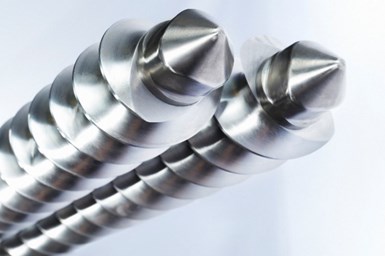
Twin screws interact with each other, but don’t confuse their self-wiping characteristics with self-cleaning. Photo: Leistritz Extrusion
Krueger elaborates, “Screw design does not have any significant impact on removing contamination, even though a twin-screw is designed to be ‘self-wiping.’ Substantial heat is generated due to shear, and contamination will occur regardless.” If your plant is dealing with either of these scenarios, consider working with a purging expert to conduct a cost-savings analysis so you can show management just how costly this decision is.
Adopting preventive purging practices not only saves your facility from machine downtime, but it also reduces scrap rates, customer rejects and line shutdowns. You can’t afford to wait to run purging compounds until the last minute because, by that time, you’re already suffering from contamination issues or color streaks. Twin-screw extruders cannot afford this approach. The experts agree that changeovers are the biggest issue that compounders struggle with. If you need faster changeovers, purging compounds are an easy win. Using a purging compound at regular intervals prevents contamination from the beginning.
Screw design does not have any significant impact on removing contamination, even though a twin-screw is designed to be “self-wiping.”
Typically, it only takes one to two-barrel capacities of purging compound to prevent contamination. Preventive purging saves time and money through efficient use of capacity and prevents unplanned downtime. There are three main benefits to implementing a preventive maintenance program and purging process at your facility:
• Preventing buildup of color and carbon contamination;
• Reducing excessive purging time and material waste at the end of production runs;
• Limiting the frequency of screw pushes and minimizing the time and effort required to pull and manually clean your screw.
Once your plant has buy-in and your line workers understand that it’s much more beneficial to be proactive than reactive, you will start to see immediate savings.
Tip 4: Make sure you are optimizing your screw pushes for easier teardowns: If changeovers are the biggest challenge that compounders face, screw pushes are a close second. Sometimes a change in product requires you to swap out a screw element, and this can be time-consuming if the screws are not in an ideal condition for removal. Asaclean has several large compounding customers who run several resins or the same resin with different additives. Often compounding different resins requires different screw design or the compounder is required to pull screw to ensure processing resins don’t mix. Most polymers by nature tend to adhere to screw surfaces, and these layers present challenges not only for screw cleaning, but also for screw removal.
A typical compounder may pull a screw four to five times a week. Those producing color masterbatch are likely to pull screws every day. Some plants may carry duplicate screws, but these can cost tens of thousands of dollars in additional capital expense. For most compounders, pulling a screw and cleaning it may be the only option to get back into production. This process can be labor-intensive and incredibly costly, since downtime can cost upwards of $1000 to $1200/hr.
Asaclean’s Gutierrez said it’s not uncommon to deal with extruders struggling with 8-12 hr screw pushes. Weddell agrees, adding that “built-up material on the screw flights is very difficult to remove.” You’ll want to go with grades that make it unnecessary to clean the screw by baking it in an oven, wire brushing, torching, etc. These secondary processes also raise the likelihood of injury or of accidentally breaking an expensive screw component.
Compounders push screws for three main reasons:
• They may be required by the compounder to ensure 100% no polymer cross-blending;
• Changeovers require a different screw design;
• Severe contamination cannot be removed by normal purging.
Although screw pushes might be necessary in your plant, that doesn’t mean they need to be time-consuming, profit-sucking headaches. There are purging compounds specifically engineered for screw pulls/pushes. APNA’s Krueger said that screw pulls using Asaclean’s EX Grade can save processors 75-90% on downtime.
Tip 5: Understand your screw-design & mixing areas & pay close attention to machine settings: TSEs are modular and offer limitless combinations of screw segments and different mixing regions that also exacerbate some of these purging challenges. Many machine settings and mixing factors need to be closely watched in order to maintain consistent melt temperature, melt flow, mixing, and sheer. This leaves a lot of room for contamination to occur. On lines with additional feed streams, the margin for error is multiplied. Once contamination begins, it’s almost impossible to stop it without aggressive intervention—usually through pushing the screw or using a purging compound.
Although screw pushes might be a necessary in your plant, that doesn’t mean they need to be time-consuming, profit-sucking headaches.
Both twin- and single-screw extrusion face the general challenge of being a low-pressure process. These processes don’t have the same options to manipulate pressures and turbulence the way an injection molding process does. “Many twin-screw machines also depend on proper venting that helps achieve the appropriate mixing, fusion, or chemical reactions that the end-product requires. These vents can contribute lower pressures in those specific mixing zones and may lead to more difficulty in proper removal of product,” Gutierrez notes. “Be aware of these zones and pay close attention to your processing numbers.”
 TSEs are modular and offer limitless combinations of screw segments and different mixing regions that also make purging more challenging. Photo: Leistritz Extrusion
TSEs are modular and offer limitless combinations of screw segments and different mixing regions that also make purging more challenging. Photo: Leistritz ExtrusionTo maximize purging performance, follow your supplier’s recommended machine settings. The settings are very important. Without the correct settings, your purge compound will not activate correctly and will minimize your benefits. Using the right settings will activate your chemical purge for optimal cleaning power.
Tip 6: Super-engineering resins & heat-sensitive resins need special attention: As compounders create new resins able to withstand more extreme conditions, they need to be cautious of the how easily contamination can occur. For “super-engineering” resins like PEEK, polyetherimide, PEKK, polysulfone, etc., scrap and downtime have a devastating impact on profit margins. Jerry Weddell, Asaclean business manager, says that one of his common challenges with compounders involves changeovers with temperature swings. “For super-engineering resins, you need to use a grade designed for the challenge. There are grades that go up to 790 F but that isn’t everything. We always recommend stepping down as you change into a resin with a lower processing-temperature range. It avoids black specs as you start your next run.”
Gutierrez adds that low-temperature resins have similar concerns regarding carbon. He says, “Watch for degradation and contamination when processing heat-sensitive resins like PVC or EVOH. These resins degrade very easily. It is important to control process temperature because high temperature will lead to degradation, and cooler temperatures can lead to excessive shear.” With less heat-sensitive materials, residual polymer left in the machine will degrade over a long period of time, but in the case of PVC, degradation will occur immediately. This is a very serious processing issue.
To work effectively, the purging compound does require heat and containment, so it is important to get the heat needed to clean well, but without burning any residual resin that may still be inside the barrel. It is important to perform the initial purge at the processing temperature of the resin. Do not increase temperature inside the barrel until you are certain all the PVC has been removed. When it comes to heat-sensitive materials, extra steps do need to be taken, but they can be cleaned very effectively when using this approach.
Tip 7: Seal your machine with heat-stable compound during every shutdown: Aside from regular and preventative-maintenance purging, use a heat-stable purging compound for temporary or extended shutdowns and sealing, especially over weekends or holidays. During a shutdown without purge, oxidation occurs, which causes contamination, delaying startups and resulting in extended machine downtime. These purge grades create an “air-tight” environment in the barrel and promote further cleaning during the shutdown.
Krueger explains that “idle lines often require banking temperatures at around 200 C (392 F). When you seal with regular processing resins, you will normally have oxidation issues at startup. This is one of the most avoidable processing issues you see at extrusion plants. A good shutdown purge is a great solution if you are not running 24/7.”
Weddell says that once customers start sealing before holiday shutdowns, they pretty much are all converts. “Most of my guys reach out to me a few weeks before the July 4 or Christmas holidays to make sure they have stock before they take a break. None of them want to deal with an awful shift starting up on Monday.”
ABOUT THE AUTHOR: Tom Hanvey is senior marketing manager for Asahi Kasei Asaclean Americas. He joined the company in early 2016 and is responsible for marketing Asaclean purging compounds in North & South America. He is also co-chair of the Asahi Kasei North American Marketing Council and is a member of PLASTICS’ Future Leaders in Plastics group (FLiP). Contact: 973-257-1999; thanvey@asaclean.com; asaclean.com.
Related Content
Got Streaks or Black Specs? Here’s How to Find and Fix Them
Determining the source of streaking or contamination in your molded parts is a critical step in perfecting your purging procedures ultimately saving you time and money.
Read MoreReduce Downtime and Scrap in the Blown Film Industry
The blown film sector now benefits from a tailored solution developed by Chem-Trend to preserve integrity of the bubble.
Read MoreMarket Changes Spur Industrial Recycler to Enhance Capabilities in Clear Plastic Reprocessing
Butler MacDonald found new business and flexibility thanks to a big step-up in purging efficiency.
Read MorePolySource Enters into Exclusive Distribution Partnership with Asaclean Purging Compounds
This strategic alliance is expected to enhance resin distribution efficiency and customer success.
Read MoreRead Next
Follow These Tips to Power Up Your Purging Process
A properly executed purging process can save processors thousands a year in lost production while helping them increase output and avoid scrap. Here’s how to optimize your results.
Read MoreMolder Cuts Post-Purge Costs and Downtime in Half
By switching to a new purging compound, IMCO now can complete a changeover in 10 min.
Read MoreBe Proactive in Your Purging Program
True, it can be tough to take a machine out of production, but a purging maintenance program should be thought of as a direct line to cost savings.
Read More


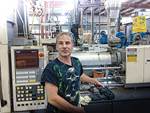
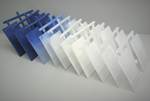













.png;maxWidth=300;quality=90)





